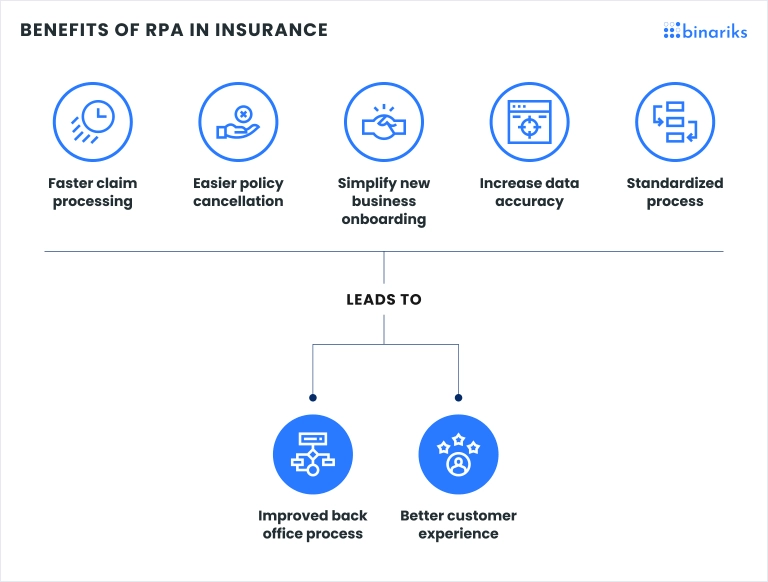As of 2024, the insurance industry has been boosted by insurance technology trends that have changed the business landscape, from customer experience to business processes.
Around 62% of insurance executives believe that the industry is keeping up with technological advancement (Source ). More than 95% think that the value of advanced analytics as an essential innovation in the insurance industry will increase over the next three years. These numbers and other latest trends prove that insurtech is rising.
The rapid development of new technologies and significant market changes imply opportunities for businesses that keep up with insurance industry trends. Tapping into insurtech trends and innovations, they get a chance to win customers and outpace slower competitors.
With the abundance of technology for insurance available, selecting what to integrate can be challenging. Read our latest article to discover the most valuable insurtech trends for 2024-2025.
Embrace InsurTech innovation with custom software development
Top 11 innovative insurtech trends to watch out for
Digital transformation in insurance is accelerating, with companies increasingly adopting software solutions to automate workflows, manage data, and enhance customer experience. Here are the top insurtech trends for 2025–2028 that gained momentum throughout 2024.
1. Generative AI
Since 2023, generative AI has gone mainstream in all industries, and insurance is no exception. Generative AI tools like Gemini and ChatGPT help insurers automate repetitive tasks, including underwriting, claims technology, fraud detection, and customer support .
Insurance sector leaders are leveraging generative AI to reduce costs, create new business models, and improve the value of existing services. For instance, knowledge assistants dramatically reduce the time needed to access and interpret policy documents.
The market of generative AI is experiencing rapid growth, with projections estimating that it will reach $22.12 billion by 2025, growing at a compound annual growth rate (CAGR) of 27.02% (Source ). A report highlighted that 59% of insurance companies leverage generative AI, indicating its expanding footprint in the industry (Source ).
Overall, generative AI is enhancing existing insurance processes and paving the way for entirely new ways of operating within the industry. Adopting these technologies can significantly improve efficiency, customer satisfaction, and the development of new insurance products and services.
2. Robotic process automation
Robotic process automation (RPA) is a trend in insurtech that helps insurtech companies save time on routine operations. Those are rule-based bots handling repetitive work. These bots can interact with digital systems and software just like humans but can work faster without errors. Here are the most common things RPA can do:
- Enter data
- Process transactions
- Automate policy administration
- Automate claims processing
- Automate customer service
By optimizing time management, RPA improves business efficiency as workers can focus on more complex problem-solving tasks, such as strategic planning and customer service management. For example, the McKinsey report shows that robotic process automation return on investment in the first year ranges between 30% and 200% (Source ).

3. Application connectivity
Connectivity is an insurtech trend that allows several apps to work as a single system. Hence, seamless information exchange between insurance technology apps makes insurtech software more efficient and convenient to use. 75% of insurers believe integrating with digital ecosystems is critical to their success (Source ). In insurance, it facilitates unified customer views and enables real-time data analytics.
A vivid example of connectivity in insurance technology is Axitech. It is a collision management system that includes two separate applications. A user can employ the driver app to record the essential information about the collision. They can take photos of a damaged car or upload police reports about the car accident. After that, a vehicle owner uses the message center of the insurance software to deliver such data to the underwriter.
4. Personalized pricing
Insurtech companies use a broad range of customer records to ensure personalized pricing. Data from various connected wearables or social media makes them understand a target audience much better. AI/ ML technology in insurance helps facilitate personalized pricing.
Traditionally, insurtech companies were focused on customer segmentation. However, the times have changed.
Modern insurance data analytics enables insurtech businesses to develop approaches tailored to clients' needs based on their risk profiles. Studies show that companies that enable individual personalization of their prices and services increase revenue per customer by 60% and customer retention by 81% (Source ).
5. Fraud detection tools
Fraud detection insurance software solutions analyze and compare data sets to help insurance agents detect fraud. This innovation in the insurance industry processes suspicious claims and claim-related information to determine deception. Check the list of issues that can be detected by such insurance software.
As more and more businesses recognize the potential of fraud detection software, the market of such solutions is expected to grow at a rate of 15.4% from 2021 to 2028 (Source ).
6. Chatbots in insurance
Chatbots automate primary communication with clients. This insurance technology uses machine learning or rule-based algorithms to respond to client requests. Hence, you can ensure a better user experience without hiring dozens of customer support specialists. Humans can focus on the most complex customer service requests instead of spending most of their time on mundane tasks.
The growing quality of chatbots makes them one of the most popular insurance tech trends. In recent years, 44% of insurtech users have successfully used chatbots to get information on the services offered (Source ).

7. Predictive analytics
The global predictive analytics market is expected to grow to USD 21.5 billion by 2025, at a CAGR of 24.5% (Source ). Analytical tools are an integral part of digital transformation in insurance. They use statistical modeling, AI, or rule-based algorithms to process significant data loads and make predictions.
Predictive insurance technologies analyze customer preferences and demand to personalize services. In addition, underwriters use such solutions to predict the risk of collisions or other accidents and make rough projections on insurance payouts. Predictive analytics also results in more accurate premium calculations.
8. Blockchain-based security
As one of the hottest insurance innovation trends, blockchain also takes a valuable place in the current insurance climate. This technology innovation in insurance fortifies database security by storing all essential data records, such as claims and payment information, in separate blocks of a single chain. Once someone attempts to retrieve or replace the information in such a block illegally, the entire chain alters completely, which is easy to detect.
In its essence, blockchain technology in insurance results in more efficient record-keeping. As of a recent analysis, around 60% of insurance companies are already investing in blockchain technology. Furthermore, 80% of C-suite executives in these companies believe blockchain can bring operational efficiencies (Source ).
9. Telematics insurance
Telematics is mainly used to track policyholders' driving behavior in auto insurance – for instance, by running a telematics box installed into a vehicle. The device uses a GPS, motion sensors, and analytical tools. Telematics enables it to track speed, location, time, aspects of crash accidents, and other driving data that matters for collision claims.
Telematics has already become a popular car insurance industry trend. For car insurance, telematics adoption remains below 20% globally, with significant variation across countries. The US, Italy, and South Africa lead in penetration rates. Telematics benefits users cite include antitheft measures, lower premiums, and improved driving behavior. The EU mandates emergency-call systems in new cars, illustrating regulatory support for telematics.
This technology, integral to usage-based insurance (UBI), collects data on driving behavior to tailor insurance premiums more accurately, promoting safer driving and potential savings for policyholders. The evident potential of telematics solutions makes them one of the most rapidly growing segments of the insurtech market.
Telematics is also used in health and life insurance to monitor physical activity and health-related behaviors through wearable devices. This data can influence premium calculations and support personalized wellness programs. In property insurance, telematics sensors monitor building conditions, detecting risks like water leaks or unauthorized entry.
10. No-code software development
No code software development is a technology innovation in insurance that arises as an alternative to creating a software project from scratch with third-party or in-house developers. Naturally, no code means building software without any manual coding. As a result, insurance companies can save money on long software development cycles and instead focus on addressing customer pain points in their strategy. No code also makes the development faster.
By the end of 2024, at least 75% of large companies are expected to use low-code/no-code tools in their IT development (Source ). This practice also yields excellent results: companies that built apps with low code have reported a 58% increase in revenue (Source ).

11. Cloud computing
Many insurtech companies use cloud, hybrid cloud, or serverless solutions to ensure higher scalability of their insurtech software. Another significant benefit of cloud technology and insurance is that it allows businesses to reduce costs. This is because they do not need to develop sophisticated infrastructures or pay for idle cloud capacities. Hence, the use of the software provided by the world's dominant cloud platforms, such as AWS , G CP , and Microsoft Azure , is one of the most valuable insurance industry trends for 2024.
In the EU, cloud-based solutions have not yet reached their full potential due to hurdles in legislation. However, with the legislative environment becoming clearer, cloud-based solutions will finally outnumber traditional storage in 2024.
This insurtech trend is changing due to the adoption of the Data Act (Regulation (EU) 2023/2854). This act is part of the EU's broader digital reform agenda and aims to establish harmonized rules on fair access to and use of data. Key aspects of the Data Act that facilitate cloud adoption include provisions to help customers switch cloud service providers more efficiently and obligations for Internet of Things (IoT) device providers to make data accessible to users.
Modern challenges of technology adoption in insurance
Data security and privacy
With the increasing reliance on digital platforms, insurers face the daunting task of protecting sensitive customer data against breaches and cyber-attacks. Ensuring data security and privacy in compliance with regulations like GDPR in the EU and CCPA in California is a critical challenge.
Insurers must adopt advanced encryption, regular vulnerability assessments, and continuous monitoring to safeguard data. It is also crucial to regularly update security protocols to guard against new vulnerabilities. Furthermore, educating customers and employees about data privacy is vital for creating a security culture.
Integration with legacy systems
Many insurance companies operate on outdated legacy systems that are not readily compatible with new technologies. The challenge lies in integrating these systems with modern solutions without disrupting existing operations. Cloud computing and API-led connectivity can offer flexibility and scalability while ensuring legacy systems remain operational during the transition.
Changing consumer expectations
The digital age has led to consumers expecting personalized, on-demand services. Insurers must leverage technology to meet these expectations, offering tailored products and seamless digital experiences. Keeping up with these demands requires continuous innovation and adaptation.
To meet these expectations, insurers must adopt a digital-first approach, leveraging data analytics and AI to offer customized insurance products and streamline claims processing . They must also enhance digital channels and adopt user-friendly platforms for easy customer interaction and transactions.
Skill gaps and talent acquisition
As the insurance industry adopts more sophisticated technologies, there is a growing need for skilled professionals to manage and leverage these tools. The competition for talent in data analytics, AI, and cybersecurity is intense, and insurers must find ways to attract and retain such individuals.
One way to go around this is to internally develop talents by investing in training programs to upskill existing staff in new technologies. Insurers can also collaborate with universities and technical institutes to access fresh talent and build a tech-savvy workforce.
Technological pace and decision paralysis
The rapid pace of technological advancement can lead to decision paralysis, where insurers need guidance on which technologies to invest in for long-term benefits. The fear of making the wrong investment can delay the adoption of potentially transformative technologies.
Implementing agile practices to enhance flexibility and responsiveness to technological changes can help fix this issue. To minimize risks, it is helpful to test new technologies on a small scale before implementing them on a broader scale.
Customer data utilization and analysis
Even after overcoming hurdles to collect and secure vast amounts of data, insurers face the challenge of effectively analyzing this data to derive insights for risk assessment and product development. Using AI, machine learning, and data management platforms is a way to address this challenge.
Our experience
Choosing the right development team is a critical precursor for insurance trends to be seamlessly integrated into your insurance application.
Binariks has solid experience incorporating technologies like RPA, AI/ML , telematics, blockchain , predictive analytics, and others. We are helping our clients avoid common insurance roadblocks, such as integrating with existing legacy systems and choosing the correct features for your application. In one of our case studies, we helped a UK-based business that provides collision management software that works with insurance claims create front-end solutions for their platform.
Collision management platform
We built a scalable front end for insurtech apps and added several new features for the client's software
Final thoughts
To conclude, the impact of new technologies on the insurance industry is loud and clear. If you are an insurer looking to survive and prevail in a competitive business landscape in the future, follow the essential technology trends in the insurance industry to gain a competitive advantage over other businesses.
While you may rely on ready solutions offered by insurtech providers, a highly-personalized approach in software development allows you to get a unique product tailored to the most specific needs of your business.
Note that software solutions for the insurance industry require solid technical expertise. Hence, outsourcing insurance innovation development is the best choice for those without a powerful in-house developer team.
Binariks extends a helping hand to insurtech companies. We have experience in developing software solutions for the insurtech industry. Check out our collision management platform project and other case studies from our portfolio to know more about how we work.
Contact us to discuss the possibilities of cooperation that will help you leverage technology trends in the insurance industry.
Share

